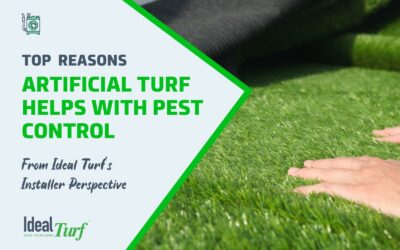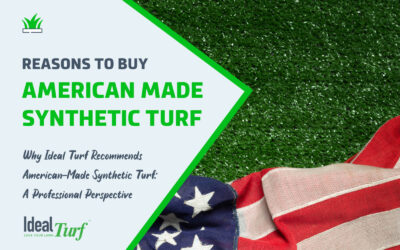Playground Ground Cover Materials: The Best Ground Cover Options for Children’s Play Areas

Play areas and playgrounds are more than just ways to keep children happy and occupied.
They provide essential benefits in the areas of cognitive, emotional, and physical development.
- Play improves language and cognitive skills and encourages problem-solving and independent thinking.
- Play helps develop movement control, flexibility, balance, reflexes, and more.
- Physical activities such as climbing, swinging and running help strengthen muscles and increase bone density.
- Physical activities help children gain a sense of accomplishment and build self-esteem.
- Play provides children with a chance to see friends and socialize.
- Play helps children learn cultural values and teamwork.
With all of this at stake, you want to make the best choices in materials and equipment for your indoor or outdoor play area or playground.
That includes choosing the ground cover best suited for the site from the standpoint of accessibility, aesthetics, availability, cost, maintenance, and safety.
With these factors in mind, let’s explore playground ground cover materials to discover the best ground cover options for children’s play areas and playgrounds.

Factors to Consider When Choosing a Playground Ground Cover
Although some of these factors are requisites only for public-access play areas and playgrounds, it is wise to follow all of them for private properties as well.
Renovations and changes to land use can eventually result in a private area becoming a public one, which would then require potentially expensive retrofitting.

Accessibility
The Americans with Disabilities Act (ADA) requires play areas and playgrounds to be accessible to all.
That means choosing a material that allows free movement for children with disabilities.
Ground cover surfaces must offer minimal resistance to wheelchairs and other mobility aids, among other ADA compliance requirements.
Read more about ADA requirements here.

Aesthetics
Children respond to visual stimuli such as color.
Studies have shown that color significantly affects children’s moods; for example, bright colors trigger positive emotions, while darker hues can generate negative feelings.
When choosing the ground cover for a play area or playground, focus on materials that offer color options that trigger feelings of joy and calm in children.
Coordinate with the immediate surroundings (and perhaps even the play equipment) to create an attractive overall aesthetic for children and adults alike.

Availability
Not all ground cover is readily available in all areas or in the quantities you may need.
That could mean that your project is delayed or that you must order materials in advance and store them to provide proper maintenance.
This is not only inconvenient but can increase your installation and maintenance costs.

Cost
Ground cover for play areas and playgrounds has two cost points: the initial purchase and installation expense and the ongoing maintenance expense.
In general, loose-fill materials such as sand, pea gravel, and wood chips are less expensive per cubic foot to purchase and install than unitary materials such as artificial grass and poured rubber or rubber tiles.
However, maintenance costs for loose-fill materials are usually significantly higher than those for unitary materials.
If you expect to keep and maintain the play area or playground for a long time, you may want to focus on unitary materials.

Maintenance
Keeping a playground clean is no small job.
However, dirt and dust, sticky spills, leftover snacks, debris, and more must be removed regularly – not just for appearance’s sake, but because they can attract bugs, irritate allergies, and even cause infections in children.
For that reason, you’ll want to choose a ground cover for your play area or playground that is as easy as possible to clean and maintain.
This is one of the reasons why owners of play areas and playgrounds favor artificial turf or a rubber compound as their ground cover.

Safety
Falls are inevitable on a playground, and the ground cover can make a big difference in whether those falls are nuisances or catastrophes.
The right ground cover will help to improve playground safety.
A safety study by the National Program for Playground Safety found that the severity of head injuries correlates to the height fallen.
For that reason, you should choose a ground cover rated to protect against falls from a height that exceeds the maximum height of your playground equipment.
Ratings are issued by the American Society of Testing and Materials (ASTM).

Common Playground Ground Cover Materials
Here are the most common options for play area and playground ground cover materials.
Along with reasons why each is popular are factors why each may or may not be a good choice for your project and the pros and cons of each material.

1. Natural Grass
Lush natural grass is beautiful to look at and not too challenging to grow.
Many varieties can be very heat-resistant if sufficient moisture is available to the roots.
However, natural grass requires a great deal of maintenance, from watering and fertilizing to mowing, weeding, edging, and more.
It develops wear spots in high-traffic areas that have to be replaced.
Finally, natural grass presents a hard surface with insufficient padding against falls from any significant height.
For a more detailed analysis of the drawbacks of natural grass, check out our comparison of fake grass vs. natural grass.
Pros
- Aesthetic and blends with surroundings
- Low initial cost
- Comparatively cool to the touch in hot weather
Cons
- Dirty, attracts insects and animals
- Requires regular, costly maintenance
- Does not meet ADA compliance standards

2. Wood Chips or Mulch
Wood chips are shock-absorbent; for example, a 9-inch layer would cushion a child falling from as high as 10 feet, according to the ASTM.
If you choose wood chips or mulch, ensure they are not treated with CCA, which can be hazardous to health.
Pros
- Inexpensive; only sand and pea gravel cost less
- Complements most landscaping
- Easy to install
Cons
- Dusty, prone to splinters and insects
- Not compliant with ADA standards
- Requires regular maintenance to maintain depth, avoid mold

3. Pea Gravel
Pea gravel gets its name because pieces are typically near or equal in size to a green pea.
It’s a popular ground cover for playgrounds due to affordability.
Pea gravel is also easy to maintain compared to alternative ground covers like sand because it doesn’t track easily and isn’t as attractive to animals.
Pros
- Comparatively inexpensive
- Easy to maintain and replace missing pieces
- Less attractive to animals
Cons
- Deep layers of pea gravel are challenging to walk through
- Not considered ADA-compliant
- Small pieces can be swallowed easily by young children

4. Play Sand
Sand is the “OG” of playground ground covers!
It’s natural, affordable, clean, and readily available.
Because dry sand “gives,” it can provide cushioning for falls.
Sand also tolerates all types of weather.
However, it tends to pack hard when wet, track from one place to another, and stick to damp clothing, shoes, and feet.
The advent of synthetic materials started a decline in the popularity of sand as a playground ground cover.
Plus, sand is not a good choice for meeting ADA accessibility requirements.
Pros
- Easy to obtain, install, and use
- Low cost per cubic foot
- Non-flammable
Cons
- Gets into eyes and mouth
- Poor ADA compliance (hard to walk on)
- Easily hides unwanted objects, including sharp edges, excrement, etc.

5. Artificial Grass
Playground & play area turf is one of the most popular unitary playground ground cover materials for modern playgrounds.
Artificial grass is particularly suited for flat-surface playgrounds.
Manufactured in many colors and several materials, artificial grass is not only highly functional but can serve as a visual design element.
Synthetic turf maintenance is minimal and it’s easy to keep clean.
Hazardous materials and debris are readily noticeable for quick removal.
Artificial grass ranks high in all the factors that experts recommend you consider when choosing the best ground cover for your play area or playground.
Pros
- Durable and long-lasting
- Low-maintenance and easy to clean
- Available in many colors
- Provides safety from hidden objects
- Excellent for both indoor and outdoor play areas
- Improves aesthetics and boosts curb appeal
Cons
- Requires professional installation
- Higher initial cost
- Not as heat-resistant as other alternatives

6. Poured Rubber & Rubber Tiles
Due to their high cost, poured rubber and rubber tiles are not a top choice as playground ground cover materials, even though they are highly water-resistant and provide lots of cushioning.
Poured rubber is typically used only for specialized applications with generous budgets, such as high-end resorts and amusement parks.
Rubber tiles are often manufactured from recycled materials such as old tires.
Poured rubber and rubber tiles must be installed on a flat, smooth surface.
Pros
- Extremely durable and impact-resistant
- Perfect for laying over an existing solid base
- Excellent ADA compliance
Cons
- Comparatively expensive
- Requires professional installation
- Can harden over time from UV exposure
![7. Engineered Wood Fiber [EWF]](https://ideal-turf.com/wp-content/uploads/2022/09/7.-Engineered-Wood-Fiber-EWF.jpg)
7. Engineered Wood Fiber [EWF]
Considered superior to other loose-fill materials used as playground ground cover materials, EWF is a top choice for ADA compliance.
EWF consists of organic fibers manufactured from wood sources in a manner that ensures a pure, safe product.
It cushions falls very well and is resistant to heat, cold, rain, and ice.
Pros
- Very affordable
- Superior protection against falls
- Excellent compaction rate (ADA compliance)
Cons
- Needs to be replenished periodically
- Requires routine maintenance to maintain ADA compliance
- Can conceal unwanted small objects, including sharp edges, excrement, etc.

Avoid These Playground Ground Cover Materials
While discussing playground ground cover materials, it would be good to quickly review those unsuitable for use as a play area or playground ground cover.
Because these are similar in some ways to the alternatives outlined above, they might accidentally wind up on a list of options to be considered.
However, be aware that playground design experts specifically advise against using any of these for the primary reasons noted below.
- Bare ground (hard, dirty, prone to insects and animals)
- Wood boards and ground-level decking (hard, slippery when wet, significant maintenance)
- Loose-fill rubber (not compliant with ADA requirements)
- Concrete and asphalt (extremely hard, can cause severe impact and abrasion injuries)

Final Thoughts on the Best Playground Ground Cover Materials
Playgrounds are important for the physical, social, and emotional development of children.
When choosing play area or playground ground cover materials, consider such factors as accessibility, aesthetics, availability, cost, maintenance, and safety.
Depending on your project, we think you’ll find that artificial grass is a superior ground cover for just about any residential or commercial play area or playground application.
There are a lot of specifics to understand about artificial grass.
The first step to creating a flawless, maintenance-free playground or play area is to educate yourself on the many features and options available.
Learn about:
Ideal Turf has extensive experience in helping property owners select the best artificial grass for their play area or playground and then providing professional installation.
We offer a variety of synthetic turf products in various colors and styles, backed by warranties ranging from 12 – 20 years, with most falling into the latter.
If you’re interested in an artificial grass installation in Texas or Oklahoma, we recommend you explore our website a bit.
To get your FREE artificial grass design & installation estimate simply “CLICK HERE” or feel free to give us a call at 800-204-4650.
Recent Posts
- How Synthetic Turf Helps Keep Fleas and Ticks Out of Your Texas and Oklahoma Yard
- Porches, Patios & Personality: Creating Outdoor Spaces Texans Love
- Turn Your Backyard into a Golfer’s Dream: Custom Putting Greens by Ideal Turf
- Why Texas Pet Owners Are Choosing Pet-Friendly Artificial Grass from Ideal Turf
- Why More Texans and Oklahomans Are Turning to Artificial Grass for a Greener Future






